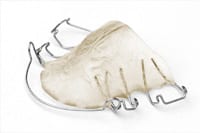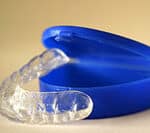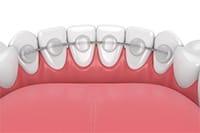Types of Retainers
Types of Retainers
Congrats! You made it through treatment!
Why are retainers needed after my braces are off?
Retainers are custom-made orthodontic devices designed to hold teeth in their new position after completing orthodontic treatment, such as braces or clear aligners. They play a crucial role in maintaining the results achieved during treatment and preventing the teeth from shifting back to their original position. Retainers can be removable or fixed, and the type of retainer recommended will depend on the patient’s needs and the orthodontist’s recommendation. Wearing retainers as instructed by the orthodontist is essential to ensure that the teeth stay in their new position and the smile remains healthy and beautiful for years to come.
Image by tonodiaz on Freepik
What do these look like?
- Hawley retainer – made of a plastic body that covers the palate and wires that wrap around the teeth. The plastic body is custom-made to fit the shape of the patient’s mouth, while the wires are adjustable to ensure a comfortable fit.
- Essix retainer – made from a clear plastic that covers the teeth and is custom-made to fit the shape of the patient’s mouth. They are clear and nearly invisible, making them more aesthetically pleasing than other types of retainers, are very easy to remove, and do not require adjustments by the orthodontist.
- Fixed wired retainer – designed to be permanent, this wire is custom-made to fit the shape of the patient’s teeth and is bonded to the back of the teeth. Though these are very effective at keeping the shape, it be more difficult to clean and may require additional oral hygiene measures.



What retainer works best for you?
Removable Retainer
Pros
- Removable retainers are more convenient than fixed retainers as they can be easily removed for eating, brushing, and flossing.
- They are often more comfortable to wear as they do not require any wires or brackets to be attached to the teeth.
- Removable retainers are easier to clean and maintain compared to fixed retainers.
- Patients can control how often they wear their removable retainers, which can make the adjustment process more manageable.

Cons
- Removable retainers require patient compliance to be effective, meaning they must be worn as instructed by the orthodontist.
- Patients may forget to wear their retainers, which can lead to teeth shifting back to their original position over time.
- Removable retainers can be lost or misplaced, leading to additional cost and inconvenience.
- Some patients may experience discomfort or soreness when first wearing their removable retainer as it can take time to adjust to the new appliance.
Bonded Wire
Pros
- Long-term retention: Bonded wire retainers are fixed in place and can provide continuous support to your teeth, ensuring that they stay in their correct position over the long term
- Convenience: Unlike removable retainers, bonded wire retainers require no special care or maintenance. Once they are attached to your teeth, you don’t have to worry about taking them our or remembering to wear them.
- Aesthetics: Bonded wire retainers are made of a thin wire that is bonded to the back of your teeth, making them virtually invisible. This can be particularly beneficial for individuals who want to maintain their appearance while still preserving the alignment of their teeth.
- Stability: Bonded wire retainers are designed to be strong and stable, providing a reliable means of keeping your teeth in their proper position. This can help prevent future orthodontic issues and ensure that your teeth continue to look their best.
Cons
- Difficulty in cleaning: Bonded wire retainers can be difficult to clean properly, as they are fixed in place and can trap food and plaque. This can increase the risk of cavities, gun disease, and bad breath.
- Possible discomfort: Bonded wire retainers can cause some initial discomfort or soreness after they are first placed, especially if they are adjusted or tightened. This discomfort usually goes away after a few days, but it can make eating and speaking more difficult in the meantime.
- Cost: Bonded wire retainers can be more expensive than removable retainers, and they may not be covered by insurance. This can make them a less attractive option for some people.
- Potential for breakage: Bonded wire retainers can break or become dislodged if they are subjected to too much force or pressure. This can be a problem if you play contact sports or engage in other activities that could damage your teeth or mouth.
